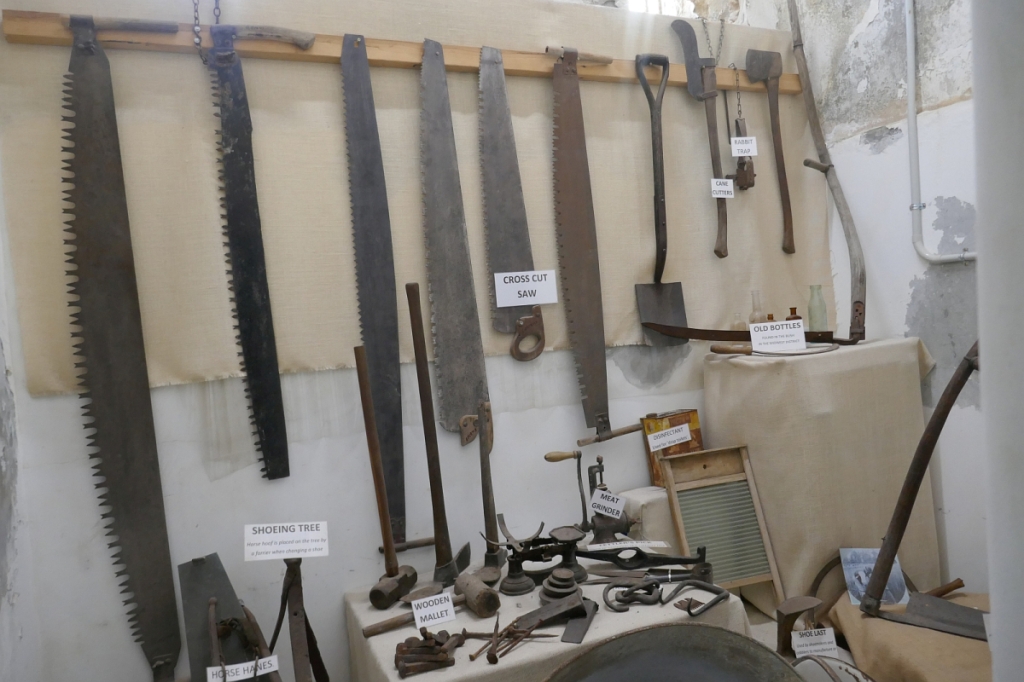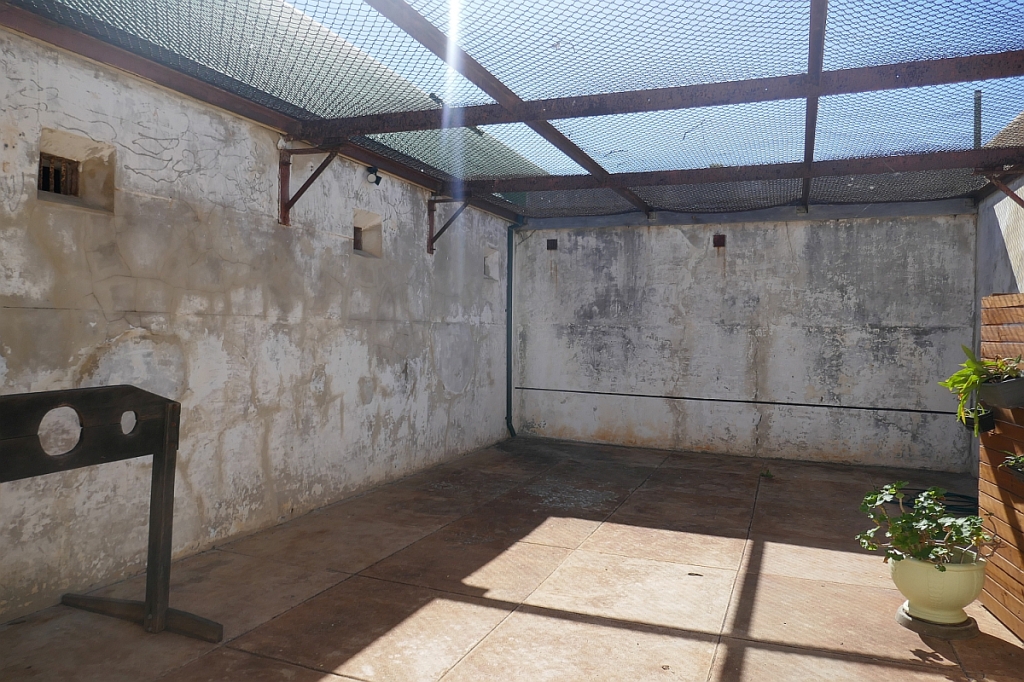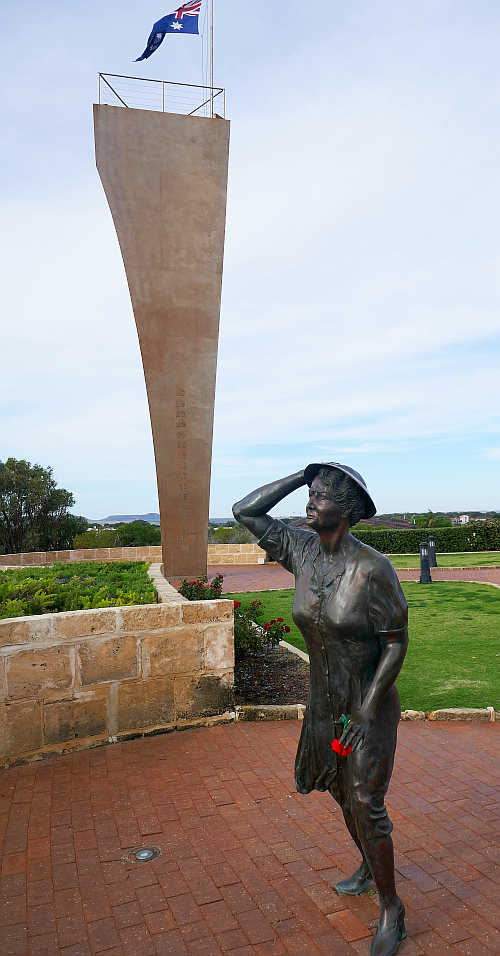
After our visit to the Geraldton Museum yesterday, we had to walk back past a large group of older buildings that I noticed on the map were called the Bill Sewell Complex. The buildings looked heritage quality (in fact they were!) and one of the buildings next to the front fence was called the Old Geraldton Gaol. We decided that they would be worth a look tomorrow so this site was first on our list for visiting the next morning.
The sign on the main building in the photo above states that it’s called ‘Victoria House’ but it was in fact the main building that was once part of the Geraldton Hospital which by the early 20th century consisted of seven separate buildings. The buildings have been conserved by the National Trust. We had a lovely walk around the grounds of the old hospital but didn’t get the opportunity to visit inside.
Curiously in November 2019, the National Trust decided to review the name of the complex. The usual meetings took place, decisions were made, reviewed and reversed and eventually the new name was announced in early 2021 as the ‘Geraldton Heritage Precinct – Ngurra Barlunggu’. As yet the maps haven’t been changed to reflect this new name.

From the old hospital buildings we strolled down to the Old Geraldton Gaol, the ‘Old’ in its title meant that it was built by convicts in the 1860s. While the gaol building is well preserved and there is plenty of curious information about the challenging inmates they had held over the years, the cells of this old gaol didn’t present an atmosphere of harsh imprisonment. This was because all the cells had been taken over by the townsfolks’ grandmothers who had set up stalls in each of the cells, making and selling arts and crafts. Baby clothes and crocheted teapot covers were all the go here. I looked closer at the Gaol sign out front and noticed it also said, “Craft Centre’!
This site wasn’t totally given over to crochet, there were cells decked out with the tools used by the prisoners when they were on consignment in the community. In the exercise area there was even a set of stocks for visitors to test their endurance in being locked up.
One story that was printed on the wall of the gaol spoke of the over 300 German Prisoners of War from HSK Kormoran that sank after its battle with HMAS Sydney in 1941. They were transported from Carnarvon to Freemantle Gaol but had to stop off at Geraldton Gaol on the way. One of the local children felt sorry for these men and threw vegetables over the wall to them. This was a good segue as our next site to visit was the Memorial to HMAS Sydney which was up on Mount Scott , the hill behind the Old Goal.
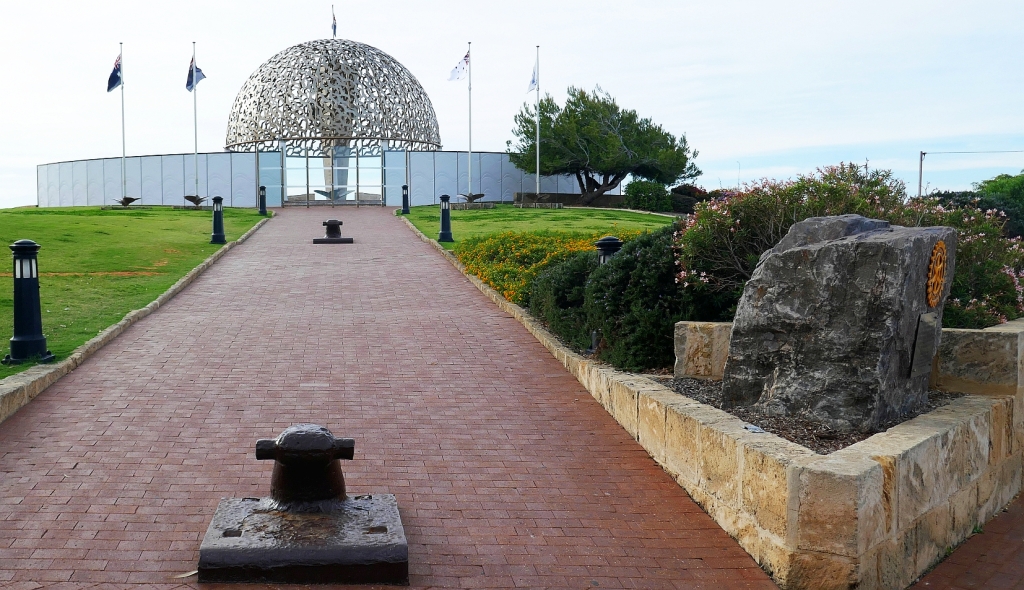
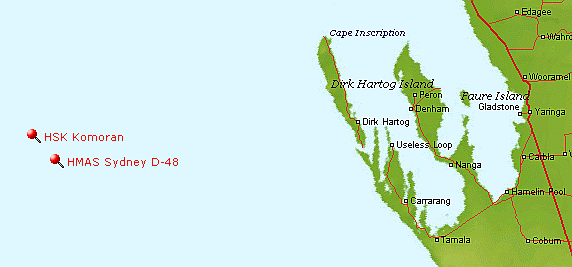
Like all stories of war, the “mutually destructive engagement” between HMAS Sydney and HSK Kormoran in 1941 is a harsh tale of the realities of war in the Indian Ocean during Australia’s part in the war against the Axis powers. HMAS Sydney was attempting to establish the identity of the ship they had encountered off Shark Bay when the Kormoran opened fire on the Australian destroyer. In the ensuing engagement, both ships were sunk but in the case of HMAS Sydney, all 645 hands were lost. Large numbers of German sailors survived the sinking of the Kormoran and spent the rest of the war in Freemantle Gaol. The site of the wrecks of these ships were not established at the time and it wasn’t until late 1997 that after intensive searches, the wreck of the Kormoran was found which then led on to the discovery of HMAS Sydney not long afterwards.
The memorial to HMAS Sydney in Geraldton is considered to be of ‘national significance.’ It commenced being built in 1997 and was completed and dedicated in November 2001. It is a beautiful site with a grand view out over the Indian Ocean. The flagpole on the site was installed in 1998 and during a remembrance ceremony that year, a large flock of seagulls flew over the memorial and this inspired the designer of the impressive dome to incorporate the seagulls into the structure. The HMAS memorial took many years to complete as it consists of five major elements…
- A granite wall listing the ship’s company.
- A stele of the same size and shape of the ship’s prow.
- A statue of a mourning woman looking out to sea.
- A ‘Dome of souls’ with 645 stainless steel seagulls attached.
- A Remembrance Pool.
In the image to the right below can be seen the Dome of Souls and the Remembrance Pool which includes a map of the position of the Sydney Wreck; the site being marked by a vertical seagull. The image on the right shows the mourning woman looking out to sea, hoping for the return of a loved one; behind her is the stele shaped like the prow of HMAS Sydney.
The site of the two WWII shipwrecks are located directly out from Denham on Shark bay. Outside the Shark Bay Discovery Centre in Denham is another large memorial to HMAS Sydney.
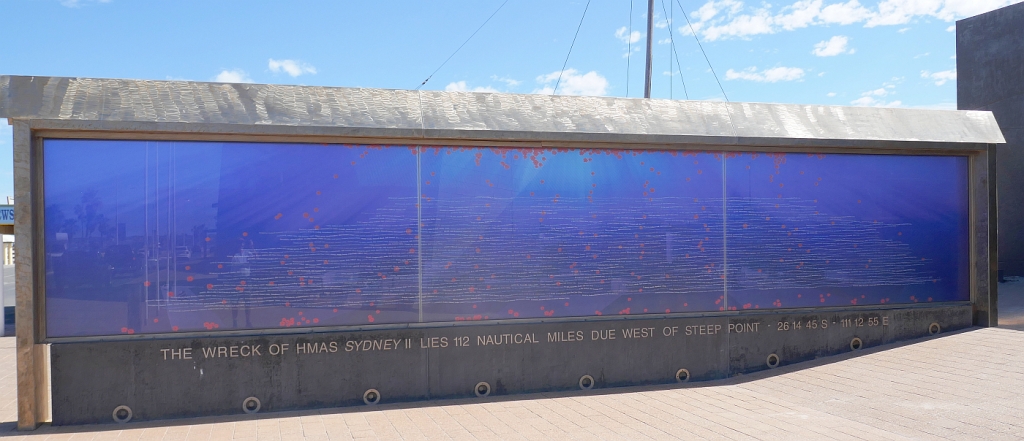
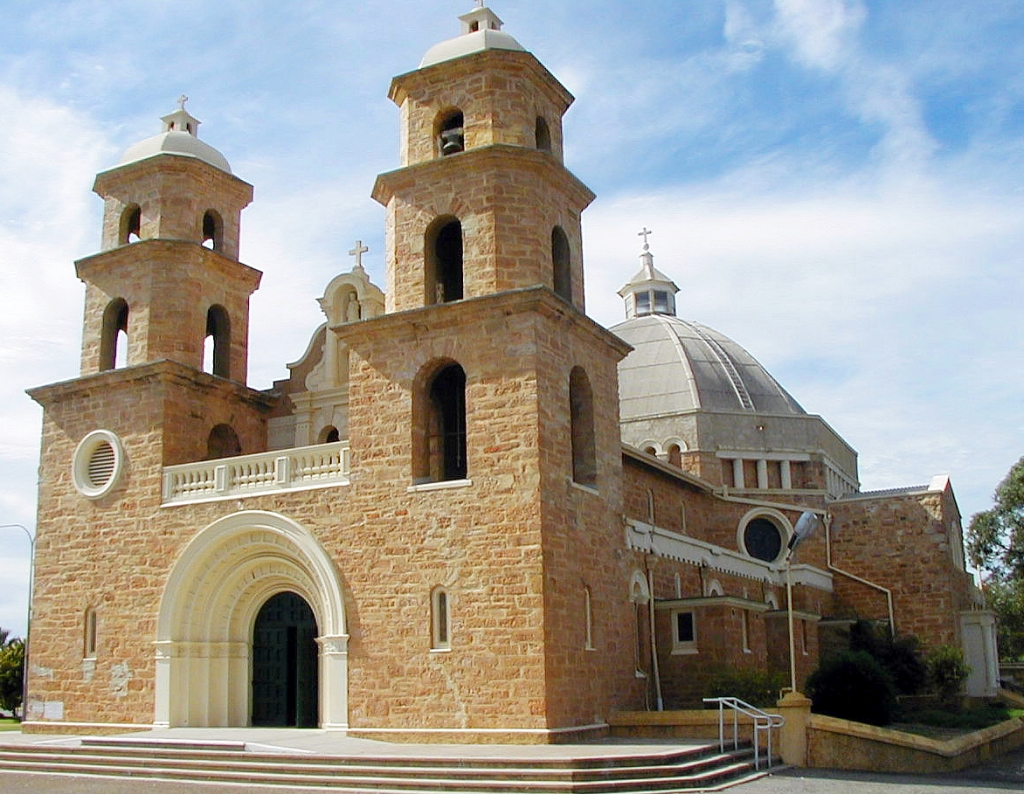
From Mount Scott it is a drive of a couple of blocks to get to Geraldton’s Catholic Cathedral, or as the town map calls it, the “St Francis Xavier Cathedral and Monsignor Hawes Interpretative Centre”. On the drive to Geraldton, we had a quick stop in Northampton and I couldn’t help but take a photo of the eye-catching church in the main street of that town designed by Hawes. (See blog – ‘The Road from Kalbarri to Geraldton’). John Cyril Hawes spent 24 years as a priest in Geraldton. He must have been a highly complex and brilliant man given that he was trained both as an Anglican, and later, as a Catholic Priest. On top of that, he was a trained architect and he put his original trade to great use in the diocese around Geraldton. In the early years of his careers, he had spent time in the Bahamas where he retired to, after leaving Geraldton in 1939. He also designed and built 6 churches at least in the Bahamas.

St Francis Xavier Cathedral is a lovely place to visit for its own sake, not just as a memorial to the character who spent his last years as a hermit in the Bahamas. It was well past lunchtime by the time we had finished with the Cathedral but we knew our destination for a late lunch; the café outside the Geraldton’s Fishermen’s Co-operative. This cafe was in the main port area of Geraldton and it was a very busy place of trains, ships and containers. However the fish and chips were great, despite the fact that my companion was dead keen on trying one of Geraldton’s famous half-lobsters. No doubt if they hadn’t run out of lobsters, it would have been shipped in from the Abrolhos Islands off the coast.

Just up the road from our café at the Fishermens’ Co-operative was a red and white lighthouse that had a number of ‘firsts’ attached to its name. It is the first all-steel lighthouse built on the Australian mainland. Built in 1877, it is also the oldest surviving lighthouse in WA. The tower itself was prefabricated in Birmingham and was shipped out to Western Australia in segments. The lighthouse is not open to the public but it’s a great place to visit and then go for a walk on the beach…it is also a popular diving location.
Geraldton was a surprisingly interesting place to visit and we enjoyed both the city sights and the pleasant Holiday Park we stayed in up at Sunset Beach. It was time to get home and prepare ourselves for our last destination before Perth on the Western Australian Coast, Cervantes.


